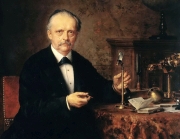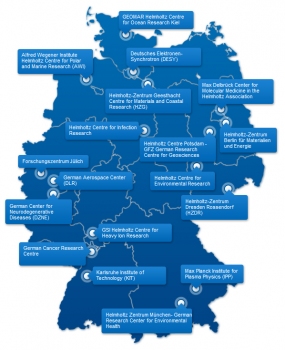The Helmholtz Association

The DKFZ is a member of the Helmholtz Association of German Research Centers. This association is Germany’s largest scientific organization and has an annual budget of approximately 4.4 billion euros. The German federal and state authorities provide about 70% of its total budget.
The Helmholtz Association stands for cutting-edge research, the goal of which is to contribute significantly to solving the greatest challenges facing science, society and industry. Its research focuses on six fields: energy; earth and environment; health; matter; key technologies and aeronautics, space and transport. Networks play a key role and Helmholtz scientists work with each other and external partners across disciplines, organizations and Germany’s borders.
The 18 research centers belonging under the Association’s umbrella employ approximately 38,700 people, including over 8,000 PhD students, and are legally independent bodies. These Helmholtz centers are equipped with state-of-the-art equipment, including large-scale scientific facilities and instruments that are only to be found on their sites.
In 2015, the Association’s scientific research resulted in 14,488 scientific publications. During the same year, more than 9,200 foreign scientists came to its centers to do research. Transferring scientific knowledge into innovation and then to the market is something that the Association excels at. Around 400 new patents are registered every year and there are currently more than 2,000 joint projects with industry.
Hermann von Helmholtz

© Ludwig Knaus (Wikimedia Commons)
The Association is named after Hermann von Helmholtz, a distinguished natural scientist of the 19th century. Von Helmholtz was one of the last truly universal scholars, specializing in a natural science that bridged the fields of medicine, physics and chemistry. His groundbreaking work brought together theory, experimental and practical applications. He was the founder and first president of the Physikalisch-Technische Reichsanstalt (PTR), considered to be the world’s first scientific research institution outside the university sector. Read more about Hermann von Helmholtz here.


